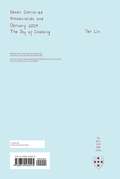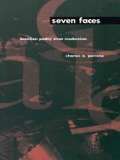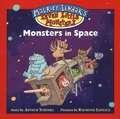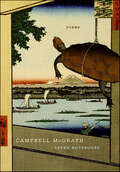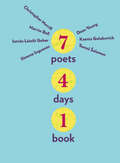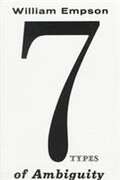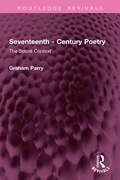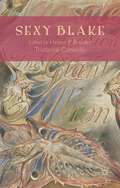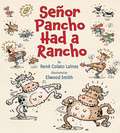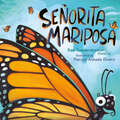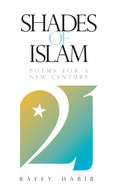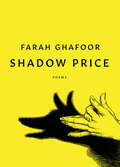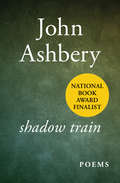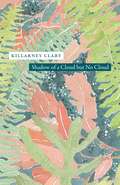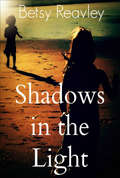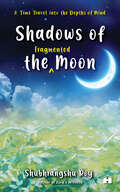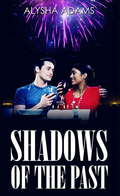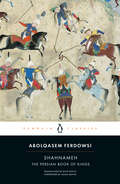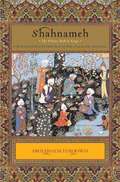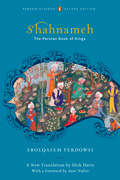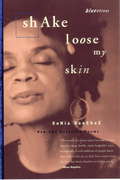- Table View
- List View
Seven Controlled Vocabularies and Obituary 2004. The Joy of Cooking: [AIRPORT NOVEL MUSICAL POEM PAINTING FILM PHOTO HALLUCINATION LANDSCAPE] (Wesleyan Poetry Series)
by Tan LinHow do we read a book as an object in a network, in a post-book, post-reading, meta-data environment? Seven Controlled Vocabularies models a generic book, a kind of field guide to the arts, wherein distinctions between various aesthetic disciplines are relaxed or dissolved and where avant-garde notions of difficulty are replaced with more relaxing and ambient formats such as yoga, disco, and meditation. Each of the book's seven sections is devoted to a particular art form--film, photography, painting, the novel, architecture, music, and theory--and includes both text and found photographs as it explores the idea of what it means to be a book in an era when reading is disappearing into a diverse array of cultural products, media formats, and aesthetic practices. Seven Controlled Vocabularies will be available in a variety of print and electronic book delivery systems and formats.
Seven Faces: Brazilian Poetry Since Modernism
by Charles A. PerroneBrazil, perhaps more than any other nation of the Americas, has placed poetry at the forefront of dialogue and debate about the limits and uses of art, the social duties of artists, and the nature of nationalism and national identity. In Seven Faces, Charles A. Perrone charts the course of Brazilian poetry in the contemporary period through the principal currents, multiple tendencies, and aesthetic tensions that have made the Brazilian lyric so creatively diverse.Perrone introduces the most important poetic themes of the second half of this century with a look back at Brazilian modernismo and the avant-garde legacy of poets of the 1920s and 30s. Brazilian poets, the author reveals, have long drawn inspiration from the other arts, experimenting with the inclusion of music, graphic arts, and other nontraditional elements within lyric forms. Relating aesthetic concerns to cultural issues, Perrone elucidates the major poetic movements in Brazil since modernismo: concretism and vanguard poetry, politically committed verse of the 60s, youth poetry of the 70s, the lyricism of Brazil's renowned popular music, and the rethinking of poetry through postmodernism in the final decades of this century.Providing a window on the ways in which poetry reflects a national spirit and offers a measure of the status of culture in a consumer society, Seven Faces is the only book-length study in English of contemporary Brazilian poetry. It will be welcomed by students and scholars of Latin American literature as well as by general readers interested in poetry and its influence on culture and society.
Seven Little Hippos
by Mike ThalerIn this variation on the familiar counting rhyme, seven little hippos persist in jumping on the bed, only to fall off one by one and bump their heads.
Seven Little Monsters: Monsters in Space - Book #1
by Arthur YorinksOne Saturday, after it had stopped raining, the seven little monsters decided to visit Pluto in outer space.
Seven Notebooks: Poems
by Campbell McGrathAn ant to the starsor stars to the ant—which ismore irrelevant?Weekend Jet Skiers—rude to call them idiots,yes, but facts are facts.Clamor of seabirdsas the sun falls—I look upand ten years have passed."—from "Dawn Notebook"Such is the expansive terrain of Seven Notebooks: the world as it is seen, known, imagined, and dreamed; our lives as they are felt, thought, desired, and lived. Written in forms that range from haiku to prose, and in a voice that veers from incantatory to deadpan, these seven poetic sequences offer diverse reflections on language and poetry, time and consciousness, civilization and art—to say nothing of bureaucrats, surfboards, and blue margaritas. Taken collectively, Seven Notebooks composes a season-by-season account of a year in the life of its narrator, from spring in Chicago to summer at the Jersey Shore to winter in Miami Beach. Not a novel in verse, not a poetic journal, but a lyric chronicle, this utterly unique book reclaims territory long abandoned by American poetry, a characteristic ambition of Campbell McGrath, one of the most honored, accessible, and humanistically engaged writers of our time.
Seven Poets, Four Days, One Book
by Marvin Bell Tomaz Salamun Dean Young Christopher Merrill Istvan Laszlo Geher Ksenia Golubovich Simone InguanezLauded poet Christopher Merrill hatched a brilliant plan: invite six other poets to join him in four days of writing in Iowa City. The poets would write for 30 minutes, creating a poem of 15 lines, and then read it aloud to the group. As poets heard the poems, they noted memorable words, images, and lines, which they would borrow to insert in subsequent poems of their own. These rounds continued, until, in a process of call and response and unprecedented collaboration, 80 poems had been composed. Those 80 poems are collected in this book, penned by authors who represent some of the best and brightest the world of poetry has to offer. Transcending differences of generation, gender, language, and vision, these poets have invented an entirely new facet of the poet's creative process.
Seven Types of Ambiguity
by William EmpsonRevised twice since it first appeared, it has remained one of the most widely read and quoted works of literary analysis. Ambiguity, according to Empson, includes "any verbal nuance, however slight, which gives room for alternative reactions to the same piece of language." From this definition, broad enough by his own admission sometimes to see "stretched absurdly far," he launches into a brilliant discussion, under seven classifications of differing complexity and depth, of such works, among others, as Shakespeare's plays and the poetry of Chaucer, Donne, Marvell, Pope, Wordsworth, Gerard Manley Hopkins, and T. S. Eliot.
Seventeenth - Century Poetry: The Social Context (Routledge Revivals)
by Graham ParryFirst published in 1985, Seventeenth-Century Poetry considers the way the poetry of the major seventeenth-century writers functioned in a social context: how it grew out of the poets’ social circumstances and ambitions, enhance their relationships with friends and patrons, how it proposed ideals of conduct and the good life. In the case of religious verse, the poetry is read within its devotional context, which in turn is related to the fortunes of the Church of England in Stuart and Commonwealth times. The book also pays serious attention to the millenarian strain which ran through religious poetry at this time.Graham Parry has selected nine poets, both well and lesser known: Jonson, Donne, Herrick, Milton, Herbert, Crashaw, Vaughan, Traherne and Marvell. For each, he considers individual volumes of poetry as they originally appeared and by analysing their structure and layout, as well as the content of the poems, he shows us what effects the poets aim to produce on their audience. In bypassing conventional groupings of seventeenth-century poets, and in emphasising the historical and social context in which they wrote, the author provides students with a fresh and illuminating perspective on their work. This is a must read for students and scholars of English literature.
Sexy Blake
by Tristanne Connolly Helen P. BruderThis book lays bare numerous sexy Blakes, arguing for both chastity and pornography, violence and domination as well as desire and redemption, and also journeying in the realms of conceptual sex and conceptual art. Fierce tussles over the body in, and the body of, the poet-artist's work celebrate Blakean attractions and repulsions.
Señor Pancho Had a Rancho
by Elwood H. Smith René Colato Laínez"Old MacDonald Had a Farm" goes multi-cultural in this rollicking Spanish-English rendition, in which the cow says moo--and la vaca says mu!
Señorita Mariposa
by Ben Gundersheimer (Mister G)A captivating and child-friendly look at the extraordinary journey that monarch butterflies take each year from Canada to Mexico; with a text in both English and Spanish.Rhyming text and lively illustrations showcase the epic trip taken by the monarch butterflies. At the end of each summer, these international travelers leave Canada to fly south to Mexico for the winter--and now readers can come along for the ride! Over mountains capped with snow, to the deserts down below. Children will be delighted to share in the fascinating journey of the monarchs and be introduced to the people and places they pass before they finally arrive in the forests that their ancestors called home.
Shabdant (Where Words End)
by Gurbhagat Singh DevWhere Words End: The English translation by Gurbhagat Singh of Dev's Sahitya Akademi award-winning collection of Poems Shabdant in Punjabi. Sahitya Akademi, New Delhi. 2007.
Shades Of Islam
by Rafey Habib"These poems offer a window onto the sensibility of a modern American Muslim, with unflinching honesty and richly informed compassion. The great humanistic tradition of poetry known in Arabic and other Eastern languages here finds a contemporary English voice, which will be recognized like a lost friend who has unaccountably been rediscovered. "--Carl W. Ernst, William R. Kenan Junior Distinguished Professor of Religious Studies, UNC-Chapel Hill This dazzling and moving new collection of poems addresses faith, love, politics, and Islam in the twenty-first century. Ráfey Habib is professor of English at Rutgers University, New Jersey.
Shadow Box: Poems
by Fred ChappellIn this sharply innovative collection, renowned poet Fred Chappell layers words and images to create a new and dramatic poetic form—the poem-within-a-poem. Like the shadow box in the volume’s title, each piece consists of an inner world contained, framed, supported by an outer—the two interdependent, sometimes supplementary, often contrary. For example, the grim but gorgeous “The Caretakers” is a landscape that reveals another image inside it. Chappell also introduces sonnets in which the sestet nests within the octet. Play serves as an important component, but the poems do not depend upon gamesmanship or verbal strategems. Instead, they delicately or wittily trace human feelings, respond somberly to the news of the world, and rejoice in humankind’s plentiful variety of attitudes and beliefs. Just as an x-ray can show the inner structure of a physical object, so the techniques in Shadow Box display the internal energies of the separate works. With this new form—the “enclosed” or “embedded” or “inlaid” poem—Chappell broadens the expressive possibilities of formal poetry, intrigues the imagination in an entirely new way, and offers surprise and revelation in sudden flashes. At once revolutionary and traditional, Shadow Box contains an Aladdin’s trove of surprises.
Shadow Price: Poems
by Farah GhafoorBorrowing its title from a finance term—“the estimated price of a good or service for which no market price exists”—Shadow Price is a stunning debut that examines the idea of value in a world that burns under our capitalist lens. What gives life value? How do we serve existing societal structures that determine its cost? Employing both surreal and documentary imagery, Farah Ghafoor's arresting collection articulates how narrative is used to revise the past and manipulate the future, ultimately forming our present-day climate crisis. Interrogating personal complicity, generational implications, and the shock of our collective disregard for a world that sustains every living thing, Shadow Price captures the complexities of living and writing as a young poet born in the year that “climate change denial” first appeared in print. Mourning the loss of Earth’s biodiversity, from insects to mammoths to trees, these introspective poems invite us to consider the risks and rewards of loving what may vanish in our lifetime. Shadow Price charges readers to contemplate their power and purpose in the world today, recognizing that there is hope even in the belly of the beast.
Shadow Train: Poems
by John AshberyA captivating experiment in traditional poetic form, from one of the most untraditional American poets ever to set pen to paperAt first glance, John Ashbery&’s Shadow Train seems to embrace the constraints of traditional poetic form—but closer reading reveals that this work is Ashbery at his revolutionary best. In fifty poems, each consisting solely of four connected quatrains, Ashbery apparently plays by the rules while simultaneously violating every single one. Over and over again, the familiar, almost sonnet-like sixteen-line form creates an outline of a poem within which, one would expect, poetry is meant to arrive—as a station waits for a train. And yet, as with many of the world&’s greatest poems, the act of creating poetry also relies on the reading and the reader—in other words, as this collection&’s signature poem &“Paradoxes and Oxymorons&” puts it, &“the poem is / you.&” In Shadow Train, Ashbery demonstrates how language influences our experience of reality, creating it and sustaining it while also remaining mysterious and ineffable: constantly arriving, but impossible to catch.
Shadow of a Cloud but No Cloud
by Killarney ClaryShadow of a Cloud but No Cloud, the latest collection from enigmatic prose poet Killarney Clary, is a book-length sequence of unnumbered, untitled poems, each evoking a clear moment in time. The details on which Clary chooses to focus suggest a narrative that will not resolve. The unnamed people with whom she interacts offer exchanges she is desperate to prolong, and in attempts to understand her place, she reaches beneath the fragile armor of those loved, especially those who can no longer answer her. This quietly haunting book, remarkable for its subtlety and delicacy, is Clary’s strongest, most engaging work to date and amply shows her to be a master of this lyric genre.
Shadows in the Light
by Betsy Reavley"Stark, beautiful and full of imagery." Shadows in the Light is a modern day testimony to the complexity of life and the difficulties we all face. These poems will resonate with experiences of its readers and prove poetry can speak for us all. This is the second collection of poetry by the author Betsy Reavley.
Shadows of the Fragmented Moon: A Time Travel into the Depths of Mind
by Shubhrangshu RoyThis fullness is filled with fullness. Fullness is born from fullness. Fullness fills fullness. In fullness, fullness is ever rested. This collection of poems attempts to unlock the wisdom of our ancient seers for the benefit of the layfolk, often eulogised for their resilience in the face of depredations of time, but with no one to turn to—not even the gods—for succour, mercy, and redemption, and far removed from expensive and time-consuming modern psychiatric intervention. It has nothing to do with religion or rituals; nothing to do with an exclusive or an exclusivist lifestyle. Rather, these poems seek to help us cope with the circumstances that confront us on our eventful walk through life. In Shadows of the Fragmented Moon, each poem has a hidden and unexplored facet of human trait that needs confronting to clear the path of ill-informed illusions. For, as the seers have claimed down the ages, the mind is only an aggregate of desires and nothing else. We humans are a conglomerate of our emotions and reason . . . without purpose, without a second chance. Understanding this one truth alone sets us free.
Shah Husain
by Harjinder Singh DhillonOn the works of Shah Husain, 1539-1599, Panjabi Sufi poet; includes selections translated into English.
Shahnameh
by Azar Nafisi Dick Davis Abolqasem FerdowsiThe definitive translation by Dick Davis of the great national epic of Iran--now newly revised and expanded to be the most complete English-language edition Dick Davis--"our pre-eminent translator from the Persian" (The Washington Post)--has revised and expanded his acclaimed translation of Ferdowsi's masterpiece, adding more than 100 pages of newly translated text. Davis's elegant combination of prose and verse allows the poetry of the Shahnameh to sing its own tales directly, interspersed sparingly with clearly marked explanations to ease along modern readers. Originally composed for the Samanid princes of Khorasan in the tenth century, the Shahnameh is among the greatest works of world literature. This prodigious narrative tells the story of pre-Islamic Persia, from the mythical creation of the world and the dawn of Persian civilization through the seventh-century Arab conquest. The stories of the Shahnameh are deeply embedded in Persian culture and beyond, as attested by their appearance in such works as The Kite Runner and the love poems of Rumi and Hafez. For more than sixty-five years, Penguin has been the leading publisher of classic literature in the English-speaking world. With more than 1,500 titles, Penguin Classics represents a global bookshelf of the best works throughout history and across genres and disciplines. Readers trust the series to provide authoritative texts enhanced by introductions and notes by distinguished scholars and contemporary authors, as well as up-to-date translations by award-winning translators.From the Trade Paperback edition.
Shahnameh: The Persian Book of Kings
by Azar Nafisi Dick Davis Abolqasem FeftdowsiBest most up-to-date English translation of the national epic of Iran.
Shahnameh: The Persian Book of Kings
by Dick Davis Abolqasem FerdowsiAmong the great works of world literature, perhaps one of the least familiar to English readers is the Shahnameh: ThePersian Book of Kings, the national epic of Persia. <P><P>This prodigious narrative, composed by the poet Ferdowsi between the years 980 and 1010, tells the story of pre- Islamic Iran, beginning in the mythic time of Creation and continuing forward to the Arab invasion in the seventh century.As a window on the world, Shahnameh belongs in the company of such literary masterpieces as Dante's Divine Comedy, the plays of Shakespeare, the epics of Homer-- classics whose reach and range bring whole cultures into view. In its pages are unforgettable moments of national triumph and failure, human courage and cruelty, blissful love and bitter grief.In tracing the roots of Iran, Shahnameh initially draws on the depths of legend and then carries its story into historical times, when ancient Persia was swept into an expanding Islamic empire. Now Dick Davis, the greatest modern translator of Persian poetry, has revisited that poem, turning the finest stories of Ferdowsi's original into an elegant combination of prose and verse. For the first time in English, in the most complete form possible, readers can experience Shahnameh in the same way that Iranian storytellers have lovingly conveyed it in Persian for the past thousand years.
Shake Loose My Skin
by Sonia SanchezAn extraordinary retrospective covering over thirty years of work, Shake Loose My Skin is a stunning testament to the literary, sensual, and political powers of the award-winning Sonia Sanchez.
